Implementation of Distracted Estimation System based on Sensor Fusion through Correlation Analysis with Concentration
Abstract
1. Introduction
2. Materials and Methods
2.1. Sensor-Fusion-Based Posture Judgment System
2.2. Control Interface
2.3. Posture Judgment and Distraction Estimation Techniques
2.3.1. Triangle Centroid Algorithm
2.3.2. Posture Determination Algorithm
2.3.3. Distraction Estimation Algorithm based on the Rate of Postural Change
2.4. Estimation of the Concentration Index through EEG Measurements
3. Results
3.1. Evaluation of Posture Determination Performance
3.2. Performance Evaluation in Everyday Life
4. Discussion and Conclusions
Author Contributions
Funding
Conflicts of Interest
References
- Park, H.S.; Kim, J.; Roh, H.L. Analysis of the risk factors of musculoskeletal disease among dentists induced by work posture. J. Phys. Ther. Sci. 2015, 27, 3651–3654. [Google Scholar] [CrossRef] [PubMed]
- World Health Organization. The WHO Health systems Framework; World Health Organization: Geneva, Switzerland, 2017. [Google Scholar]
- Noll, M.; Candott, C.T.; Da Rosa, B.N.; Do Valle, M.B. High prevalence of inadequate sitting and sleeping postures: A three-year prospective study of adolescents. Sci. Rep. 2017, 7, 14929. [Google Scholar] [CrossRef] [PubMed]
- Sedrez, J.A.; Da Sosa, M.I.Z.; Noll, M.; da Silva Mdedoris, F.; Candotti, C.T. Risk factors associated with structural postural changes in the spinal column of children and adolescents. Revista Paulista de Pediatria. 2015, 33, 72–81. [Google Scholar] [CrossRef] [PubMed]
- Ma, C.; Li, W.; Gravina, R.; Fortino, G. Posture detection based on smart cushion for wheelchair users. Sensors. 2017, 17, 719. [Google Scholar] [CrossRef] [PubMed]
- Nguyen, V.; Javaid, A.Q.; Weitnauer, M.A. Detection of motion and posture change using an IR-UWB radar. In Proceedings of the 38th Annual International Conference of the IEEE Engineering in Medicine and Biology Society (EMBC), Orlando, FL, USA, 16–20 Augest 2016. [Google Scholar]
- Rodríguez-Martín, A.M.D.; Samà, A.; Pérez-López, C.; Català, A.; Cabestany, J.; Browne, P. Posture detection based on a waist-worn accelerometer: An application to improve Freezing of Gait detection in Parkinson’s disease patients; IOS Press: Tepper Drive Clifton, VA, USA, 2015; Volume 20, pp. 3–17. [Google Scholar]
- Russell, L.; Goubran, R.; Kwamena, F. Posture detection using sounds and temperature: LMS-based approach to enable sensory substitution. IEEE Trans. Instrum. Meas. 2018, 67, 1543–1554. [Google Scholar] [CrossRef]
- Kim, M.J.; Kim, H.; Park, J.; Jee, K.K.; Lim, J.A.; Park, M.C. Real-time sitting posture correction system based on highly durable and washable electronic textile pressure sensors. Sens. Actuators A: Physical. 2018, 269, 394–400. [Google Scholar] [CrossRef]
- Liu, M.; Ye, S. A novel body posture recognition system on bed. In Proceedings of the IEEE 3rd International Conference on Signal and Image Processing (ICSIP), Shenzhen, China, 13–15 July 2018. [Google Scholar]
- Avvenuti, M.; Carbonaro, N.; Cimino, M.G.; Cola, G.; Tognetti, A.; Vaglini, G. Smart shoe-based evaluation of gait phase detection accuracy using body-worn accelerometers. In Proceedings of the International Conference on Wireless Mobile Communication and Healthcare, Vienna, Austria, 4–15 November 2017. [Google Scholar]
- Bibbo, D.; Carli, M.; Conforto, S.; Battisti, F. A Sitting Posture Monitoring Instrument to Assess Different Levels of Cognitive Engagement. Sensors 2019, 19, 455. [Google Scholar] [CrossRef] [PubMed]
- Saenz-de-Urturi, Z.; Garcia-Zapirain Soto, B. Kinect-Based Virtual Game for the Elderly that Detects Incorrect Body Postures in Real Time. Sensors 2016, 16, 704. [Google Scholar] [CrossRef] [PubMed]
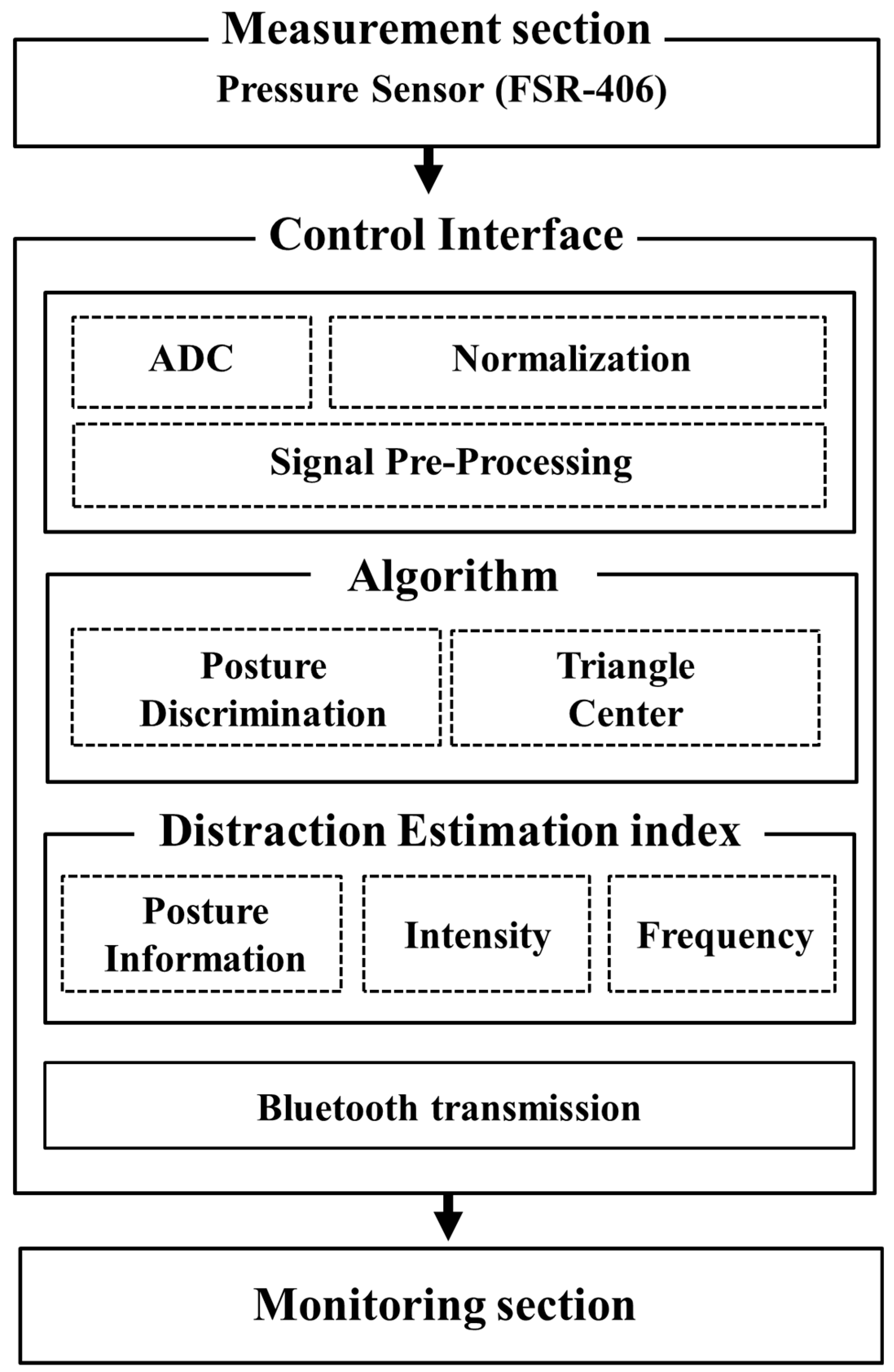

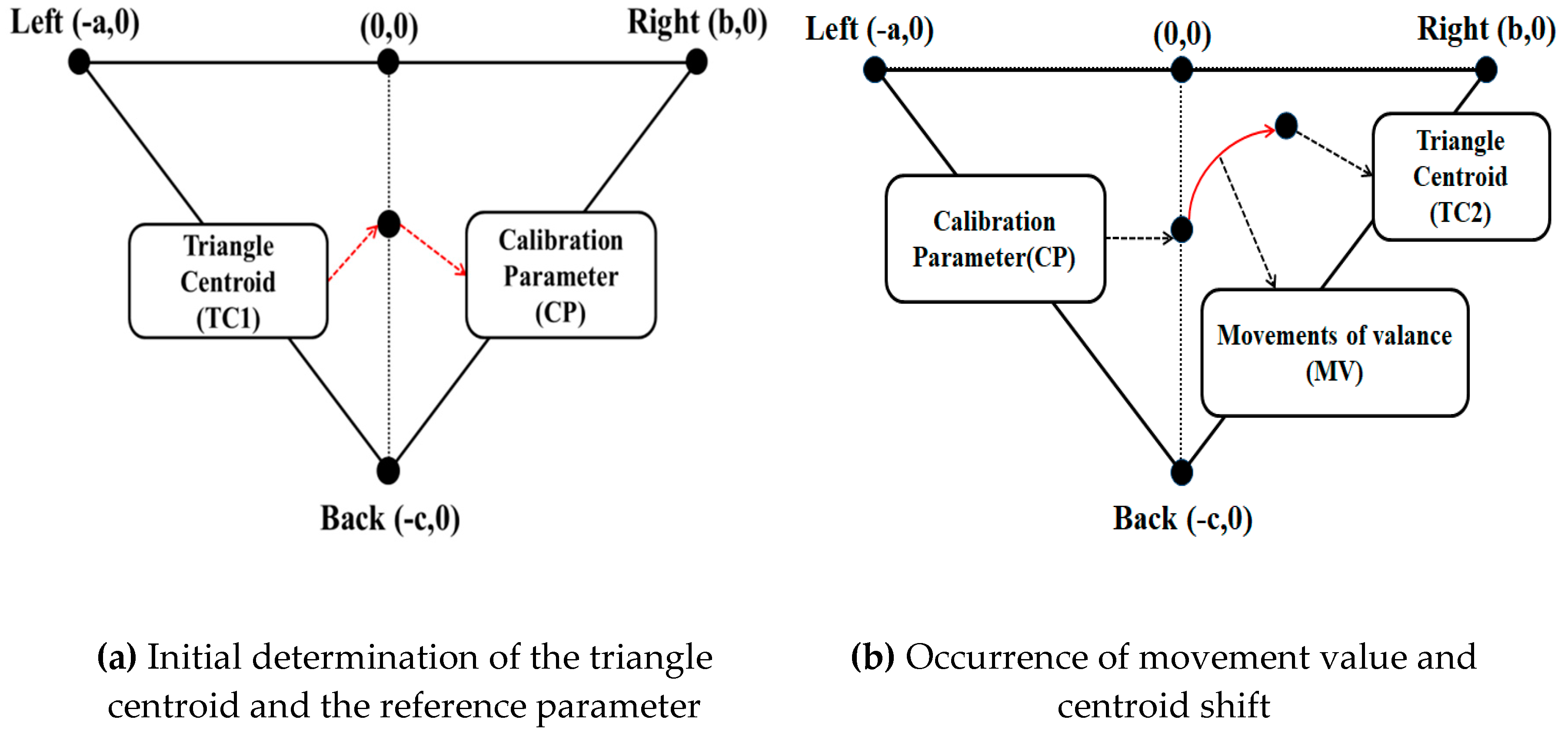
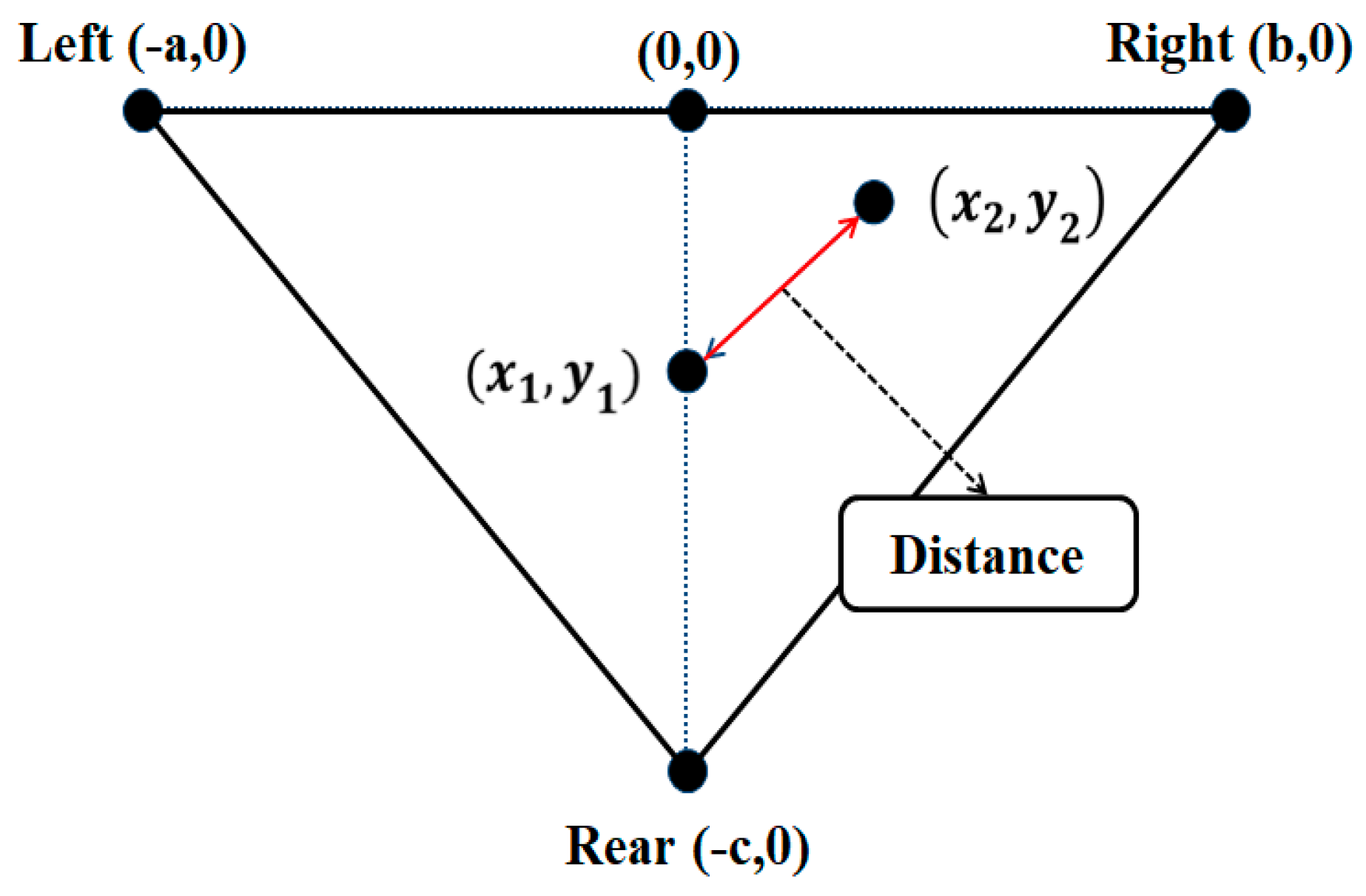
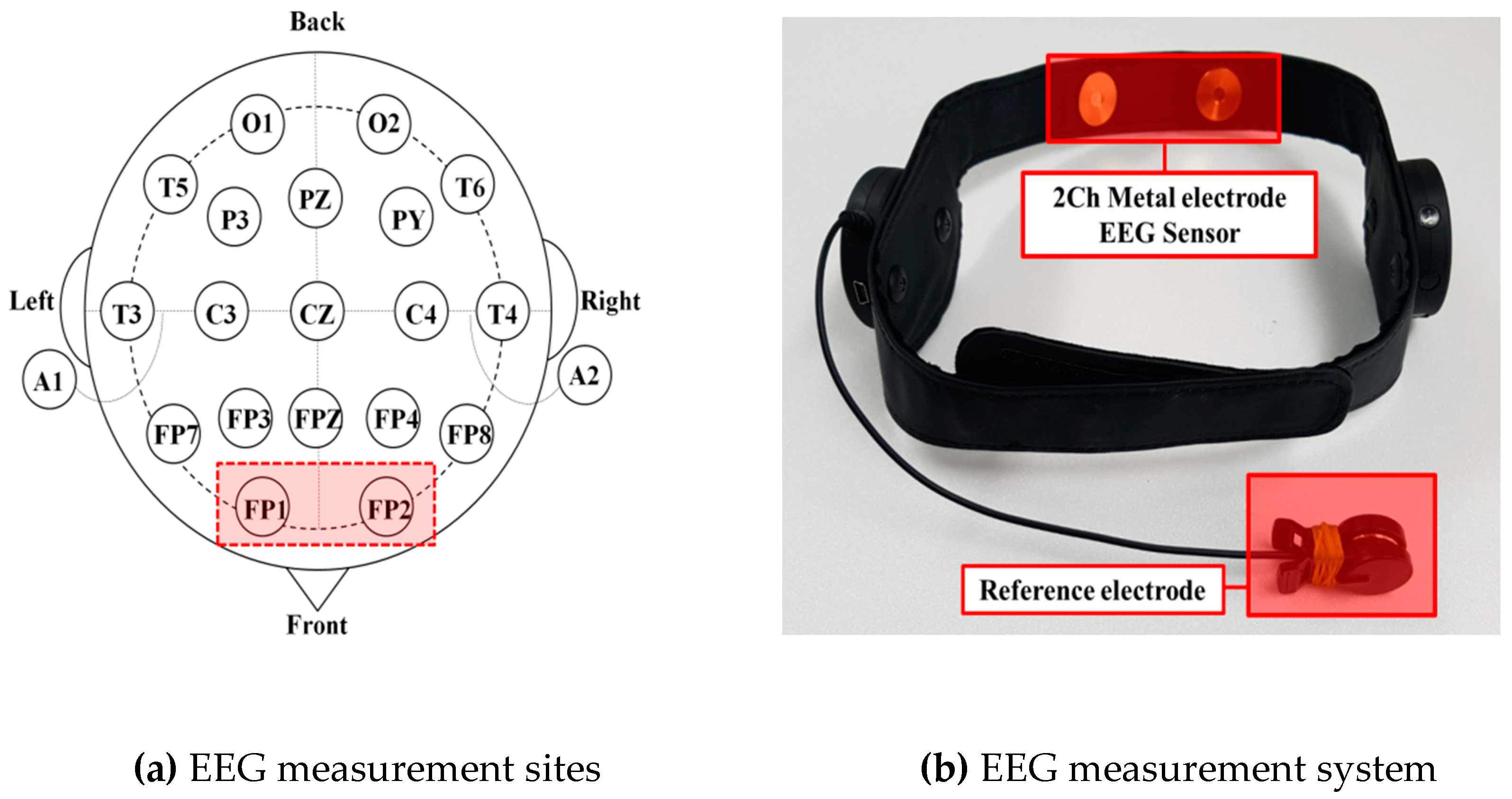
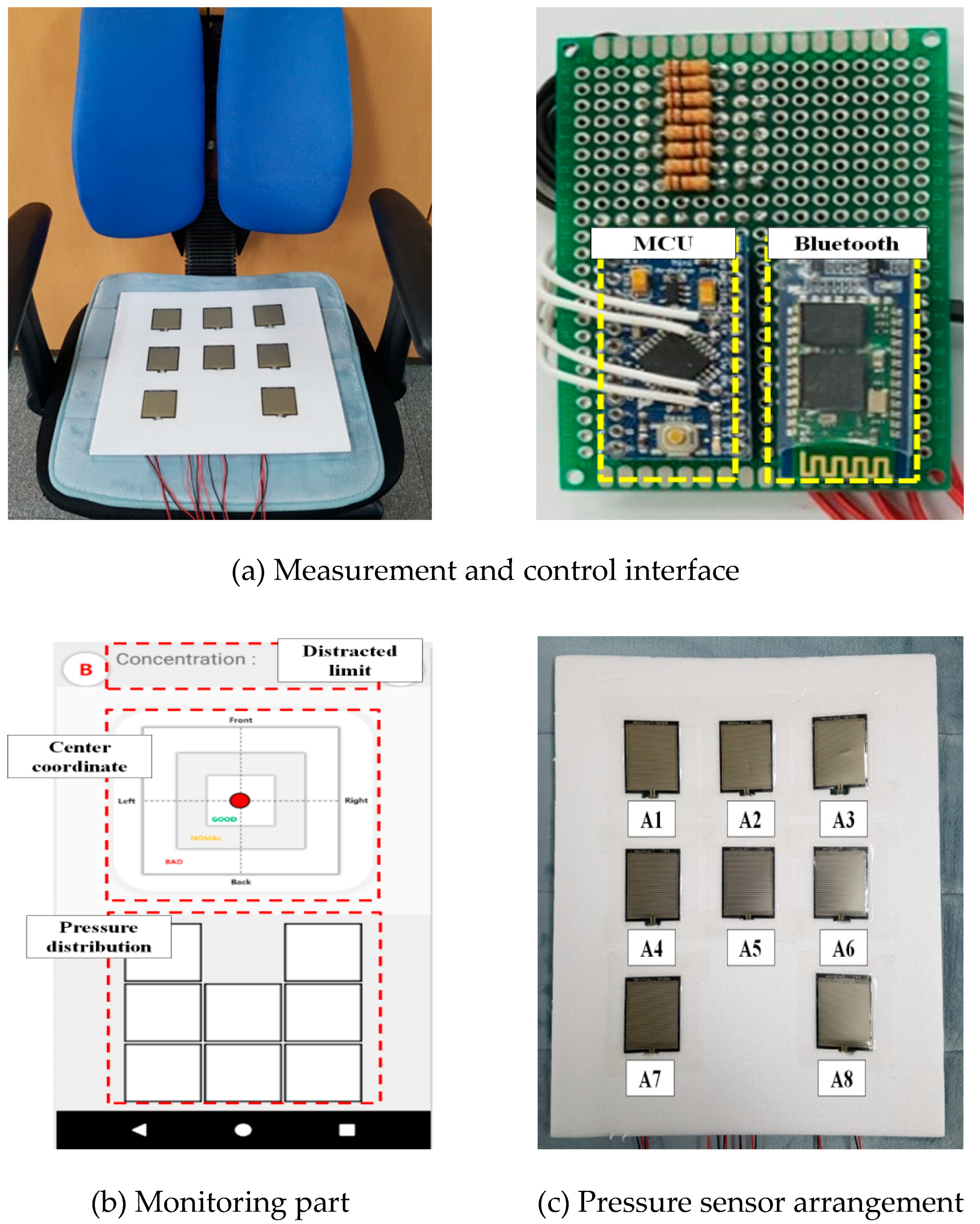

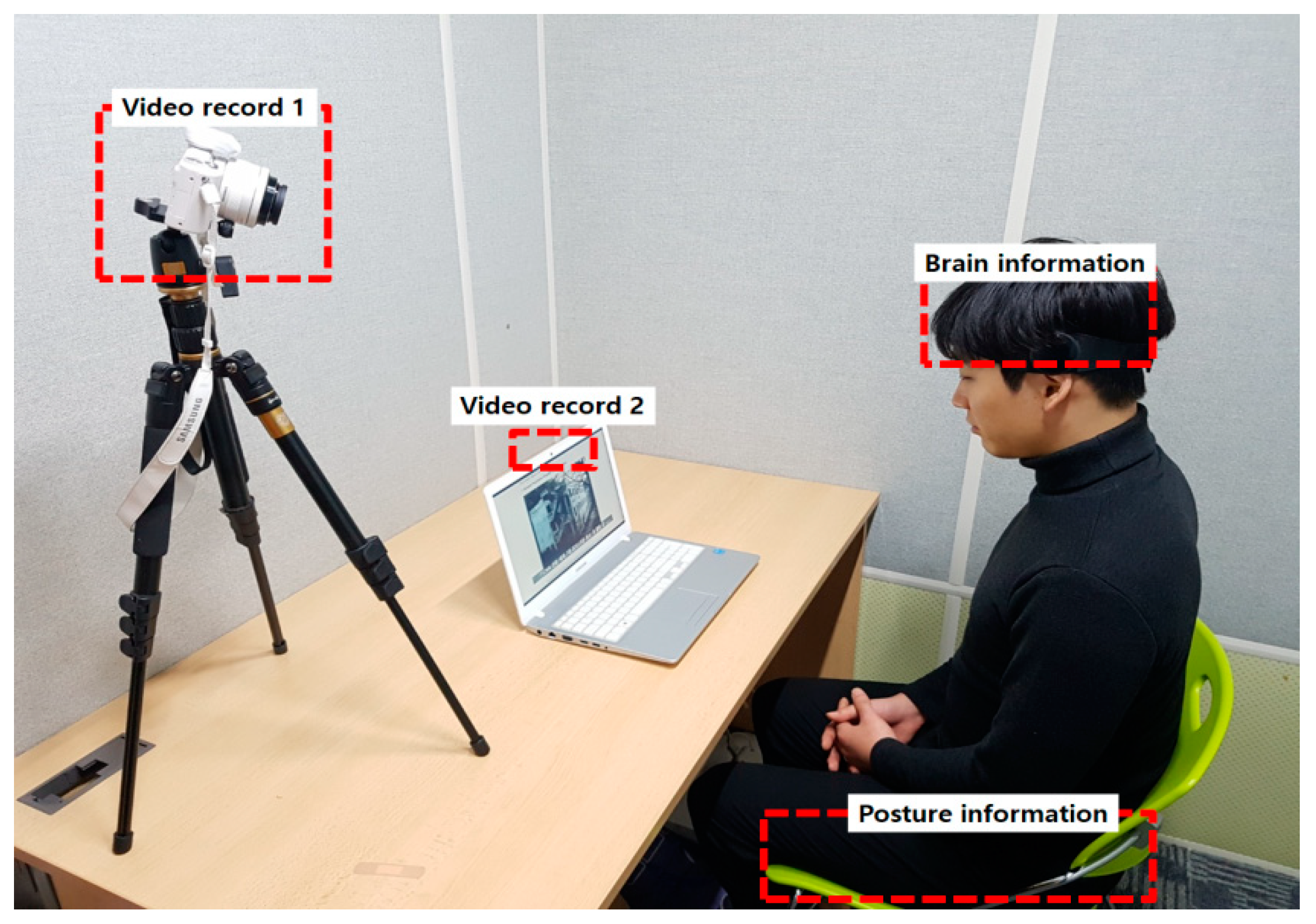
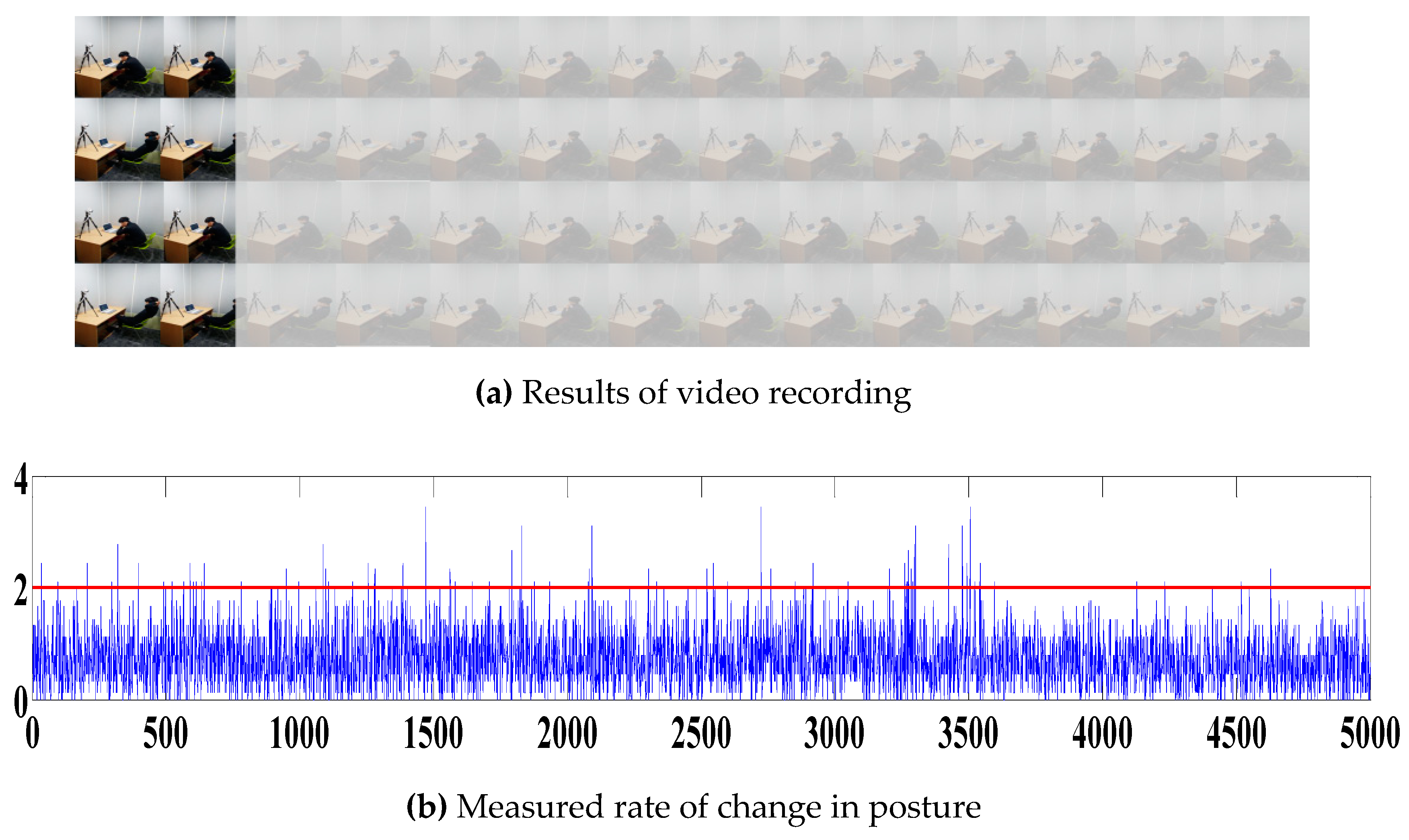
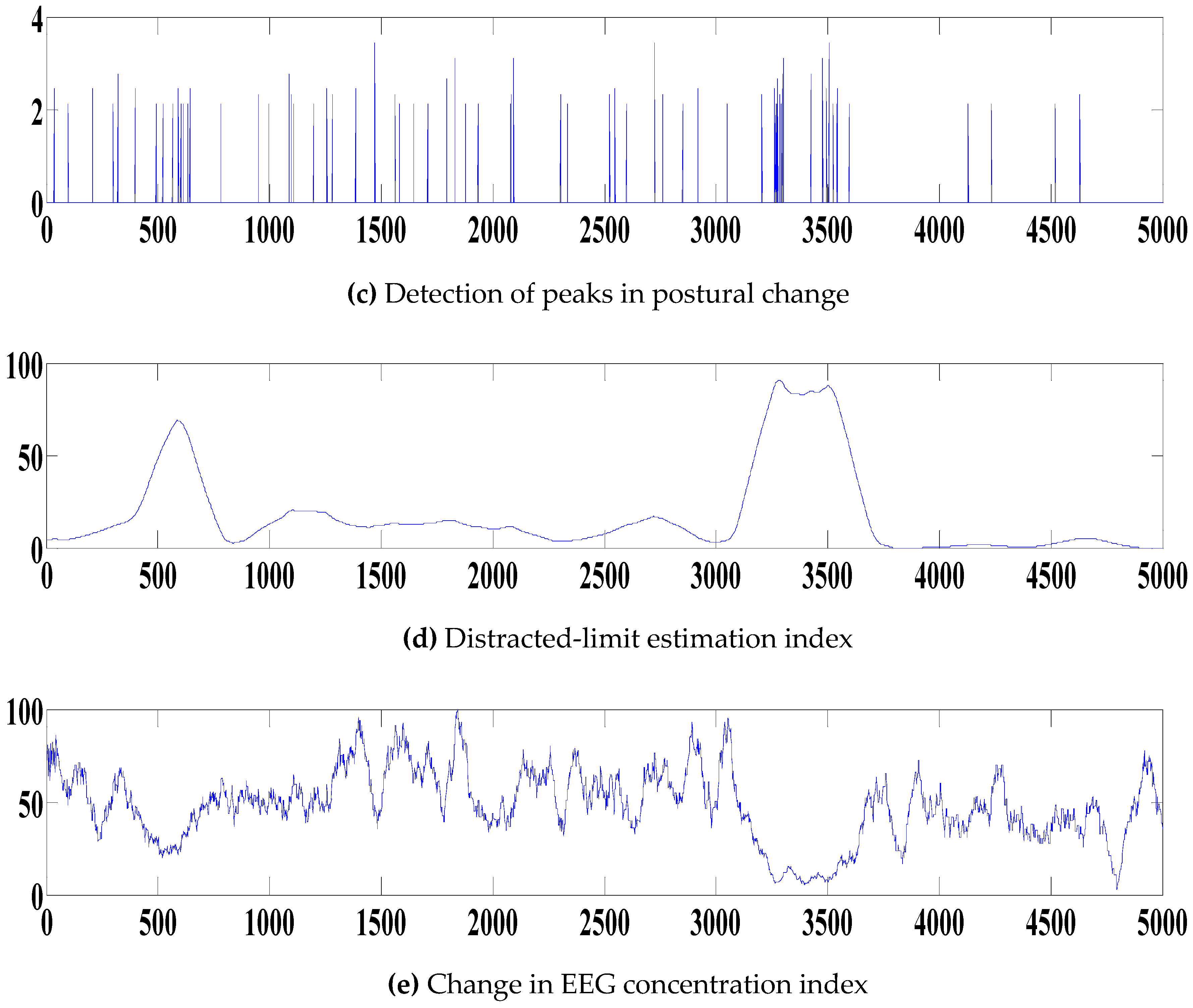

| Classification | Pressure sensor | Area |
|---|---|---|
| Left-area | A3, A5, A6, A8 | 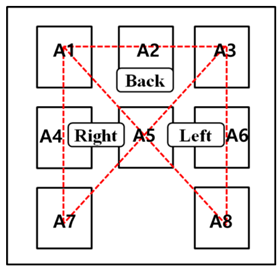 |
| Right-area | A1, A4, A5, A7 | |
| Back-area | A1, A2, A3, A5 |
| Take Posture | ||||||
| (a) | (b) | (c) | (d) | (e) | ||
| Detection | (a) | 100 | ||||
| (b) | 100 | 2 | ||||
| (c) | 100 | 2.8 | ||||
| (d) | 97.2 | |||||
| (e) | 98 | |||||
| Avg. | 100 | 100 | 100 | 97.2 | 98 | |
| 99.04 | ||||||
| Subject | Time | Before | After | Rate of change (%) | |||
|---|---|---|---|---|---|---|---|
| DLE | CI | DLE | CI | DLE | CI | ||
| 1 | 577 | 20.45 | 47.36 | 59.14 | 28.36 | +38.74 | −19.00 |
| 2 | 1113 | 7.27 | 50.58 | 18.35 | 50.08 | +11.07 | −0.50 |
| 3 | 2684 | 7.61 | 50.06 | 33.64 | 37.79 | +26.03 | −16.27 |
| 4 | 3287 | 20.78 | 56.23 | 82.25 | 13.57 | +61.47 | −42.66 |
| 5 | 1982 | 30.83 | 64.18 | 72.93 | 17.65 | +55.28 | −33.35 |
| 6 | 4832 | 39.46 | 58.44 | 41.33 | 9.65 | +31.68 | −18.98 |
| 7 | 2765 | 53.25 | 68.76 | 36.97 | 7.87 | +29.16 | −15.51 |
| 8 | 3864 | 7.46 | 57.23 | 26.34 | 46.45 | +18.88 | −10.78 |
| 9 | 2889 | 13.58 | 61.54 | 57.32 | 38.64 | +43.74 | −22.09 |
| 10 | 4312 | 8.94 | 63.72 | 26.13 | 56.28 | +17.19 | −7.44 |
| Avg. | 20.96 | 57.81 | 45.44 | 30.63 | +33.32 | −18.66 | |
© 2019 by the authors. Licensee MDPI, Basel, Switzerland. This article is an open access article distributed under the terms and conditions of the Creative Commons Attribution (CC BY) license (http://creativecommons.org/licenses/by/4.0/).
Share and Cite
Seo, J.-Y.; Noh, Y.-H.; Jeong, D.-U. Implementation of Distracted Estimation System based on Sensor Fusion through Correlation Analysis with Concentration. Sensors 2019, 19, 2053. https://doi.org/10.3390/s19092053
Seo J-Y, Noh Y-H, Jeong D-U. Implementation of Distracted Estimation System based on Sensor Fusion through Correlation Analysis with Concentration. Sensors. 2019; 19(9):2053. https://doi.org/10.3390/s19092053
Chicago/Turabian StyleSeo, Ji-Yun, Yun-Hong Noh, and Do-Un Jeong. 2019. "Implementation of Distracted Estimation System based on Sensor Fusion through Correlation Analysis with Concentration" Sensors 19, no. 9: 2053. https://doi.org/10.3390/s19092053
APA StyleSeo, J.-Y., Noh, Y.-H., & Jeong, D.-U. (2019). Implementation of Distracted Estimation System based on Sensor Fusion through Correlation Analysis with Concentration. Sensors, 19(9), 2053. https://doi.org/10.3390/s19092053





